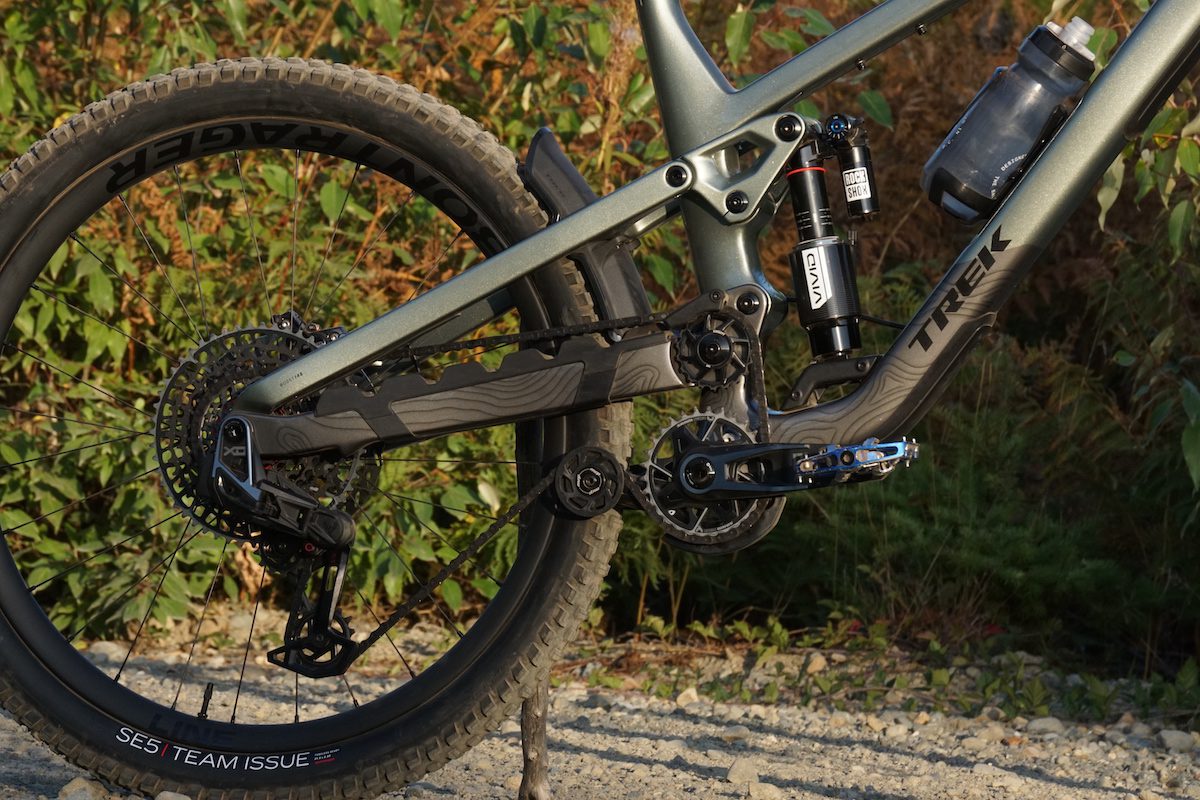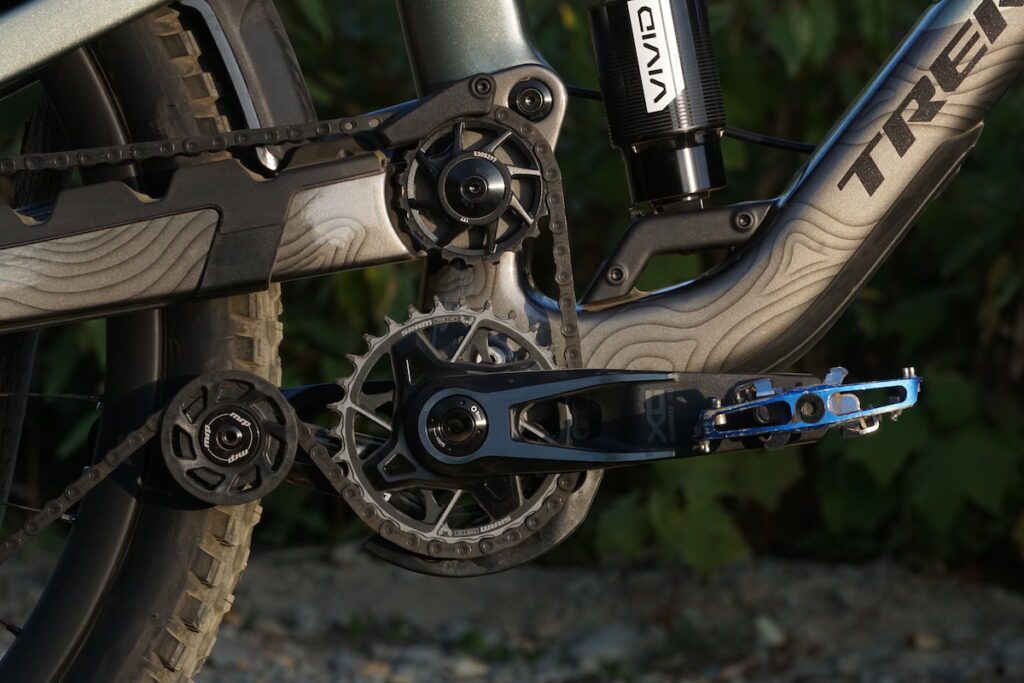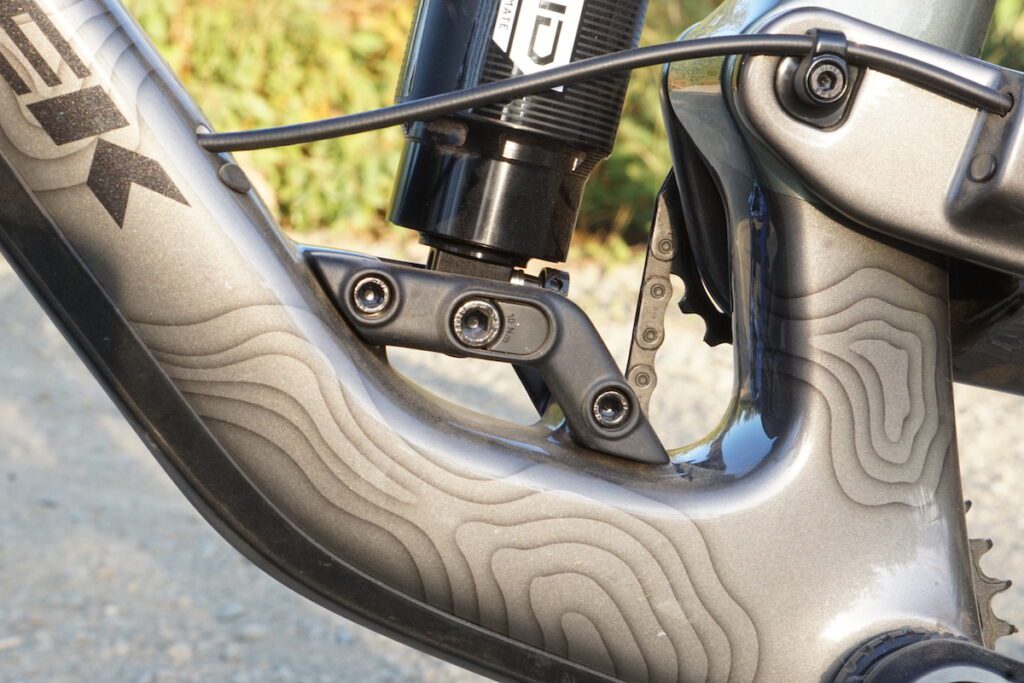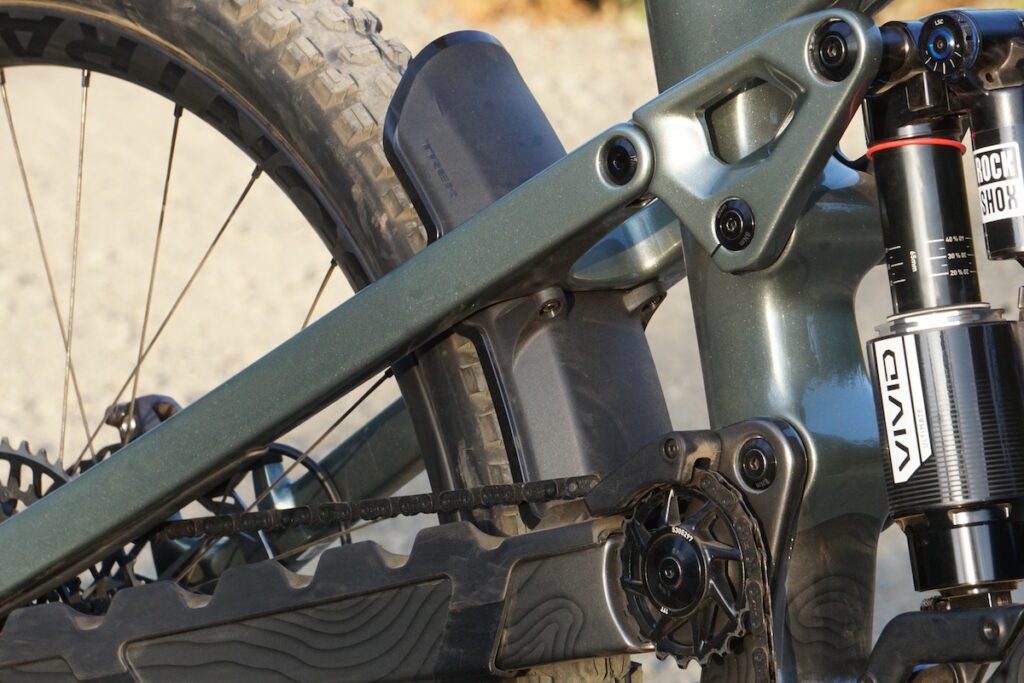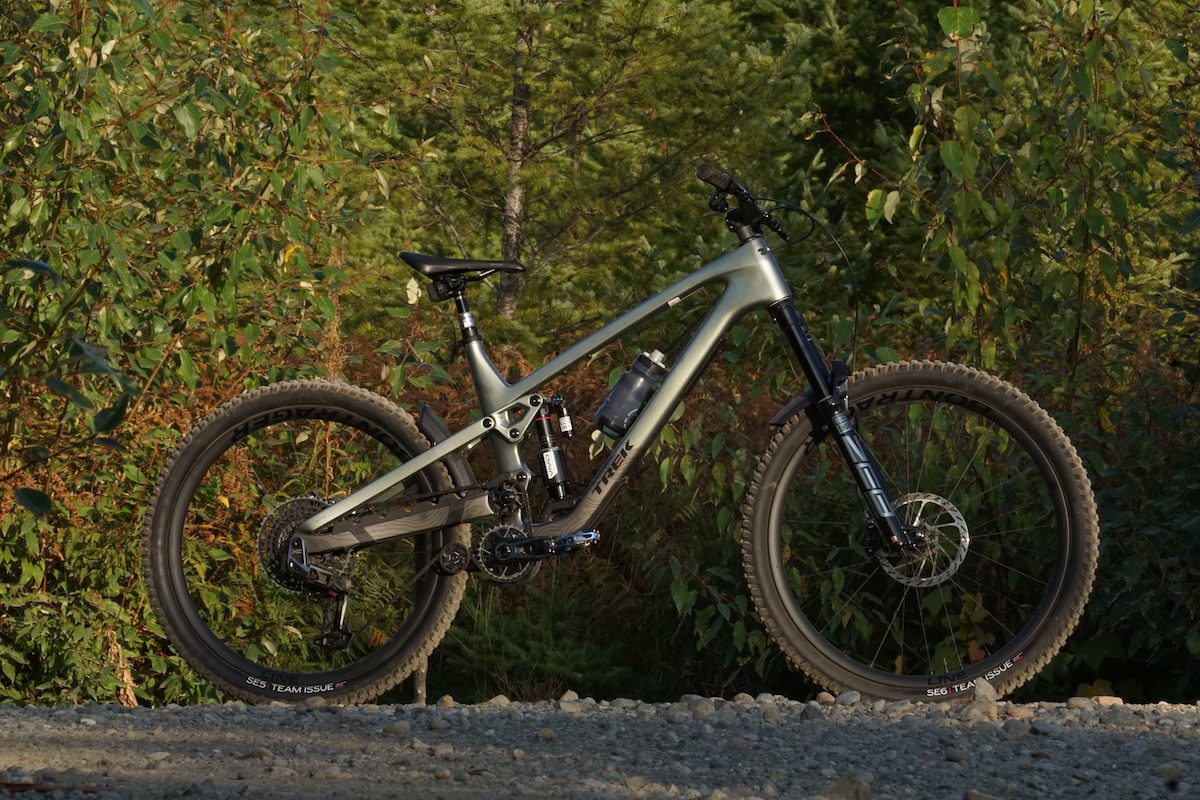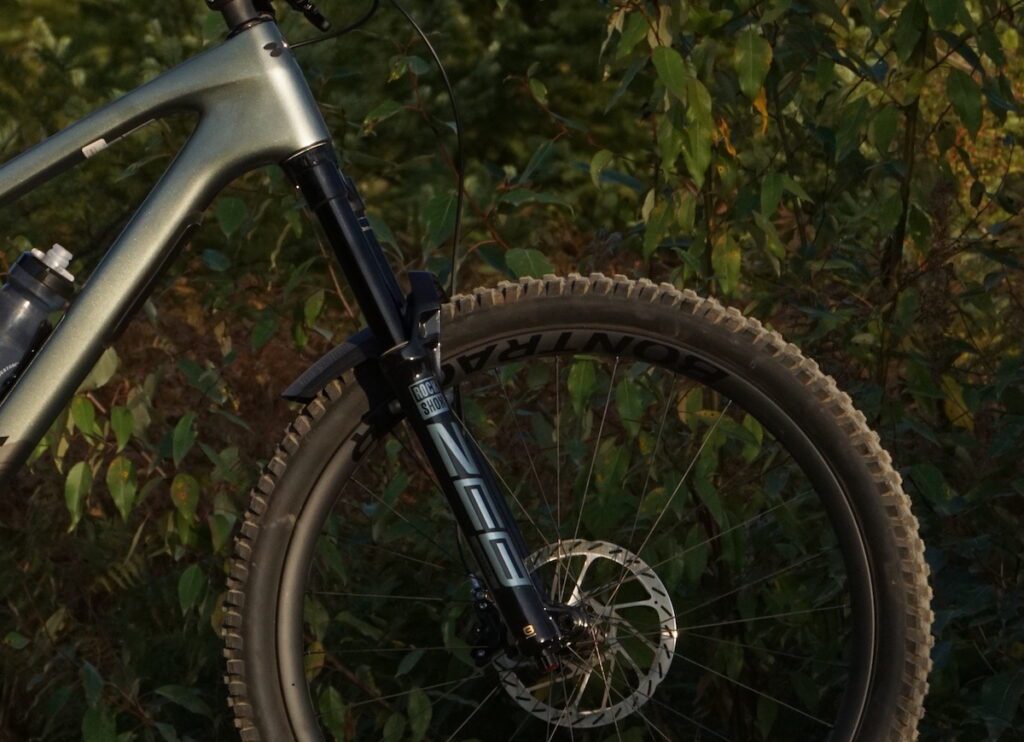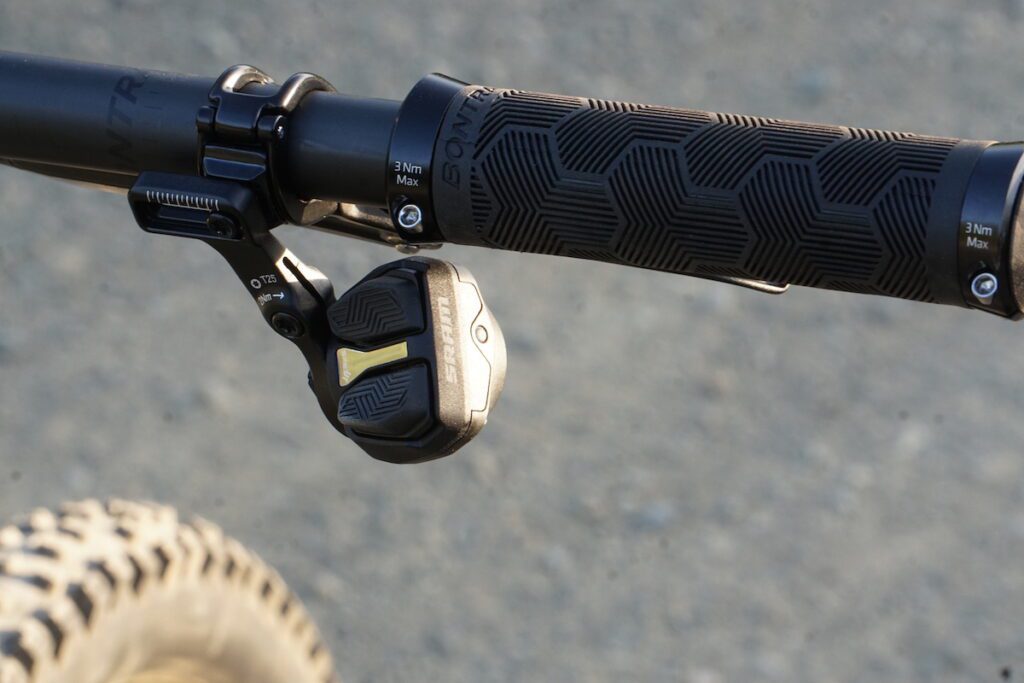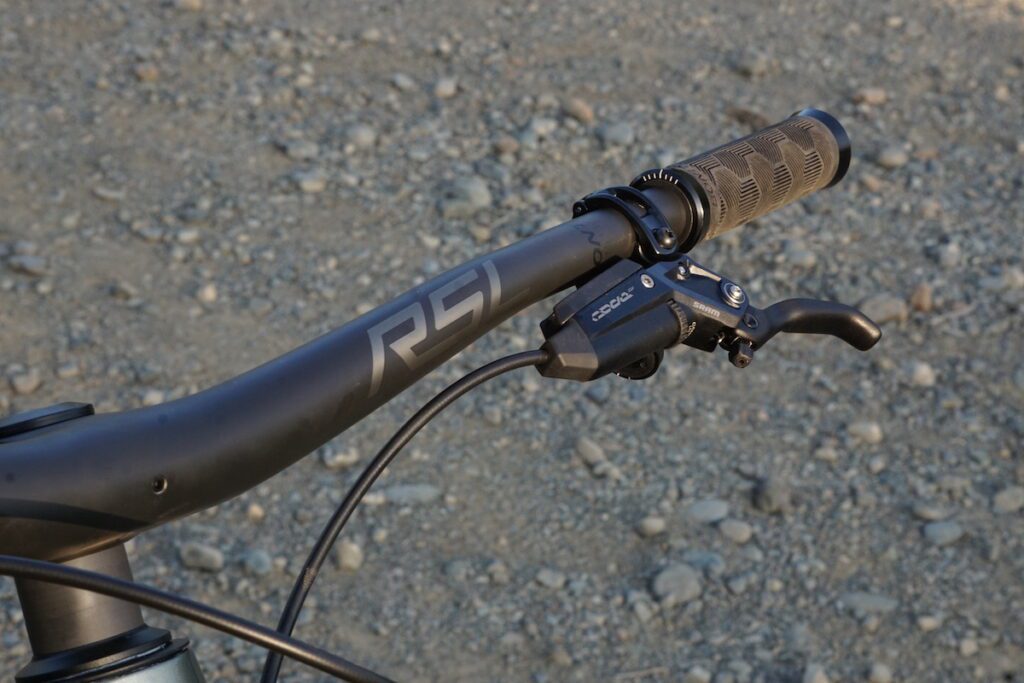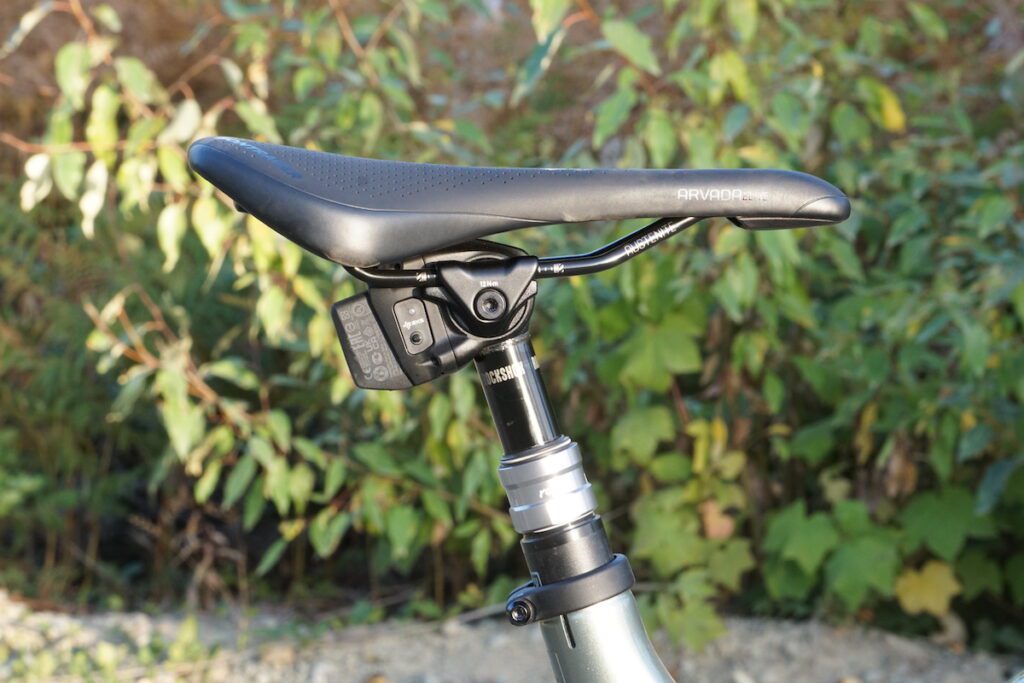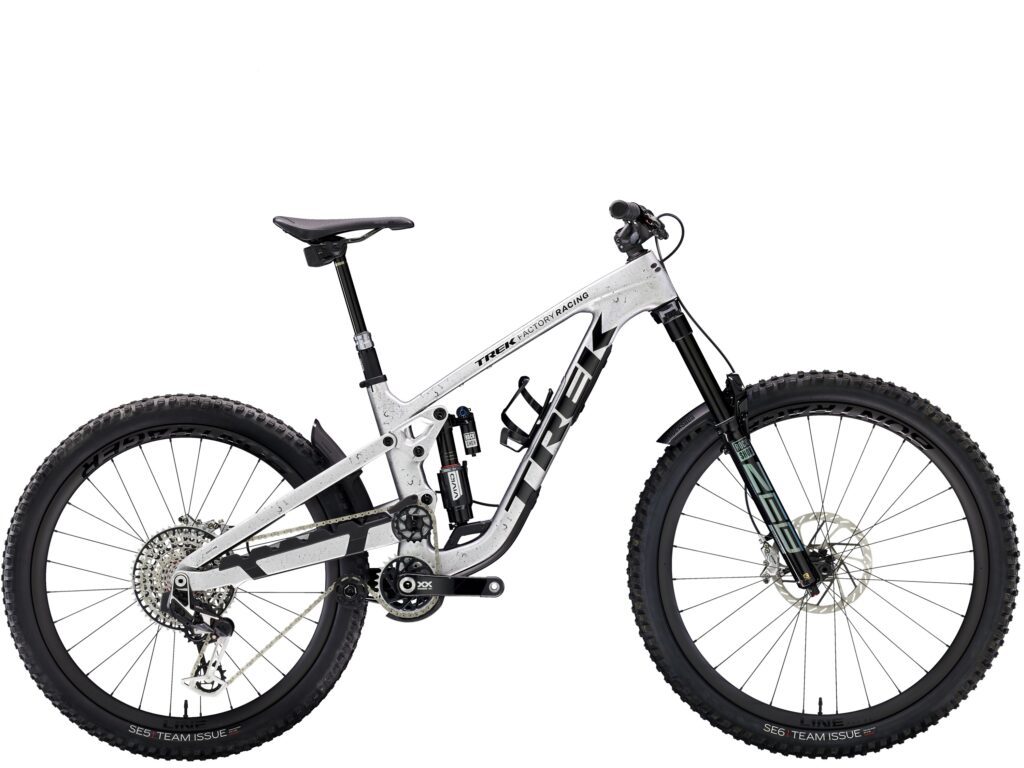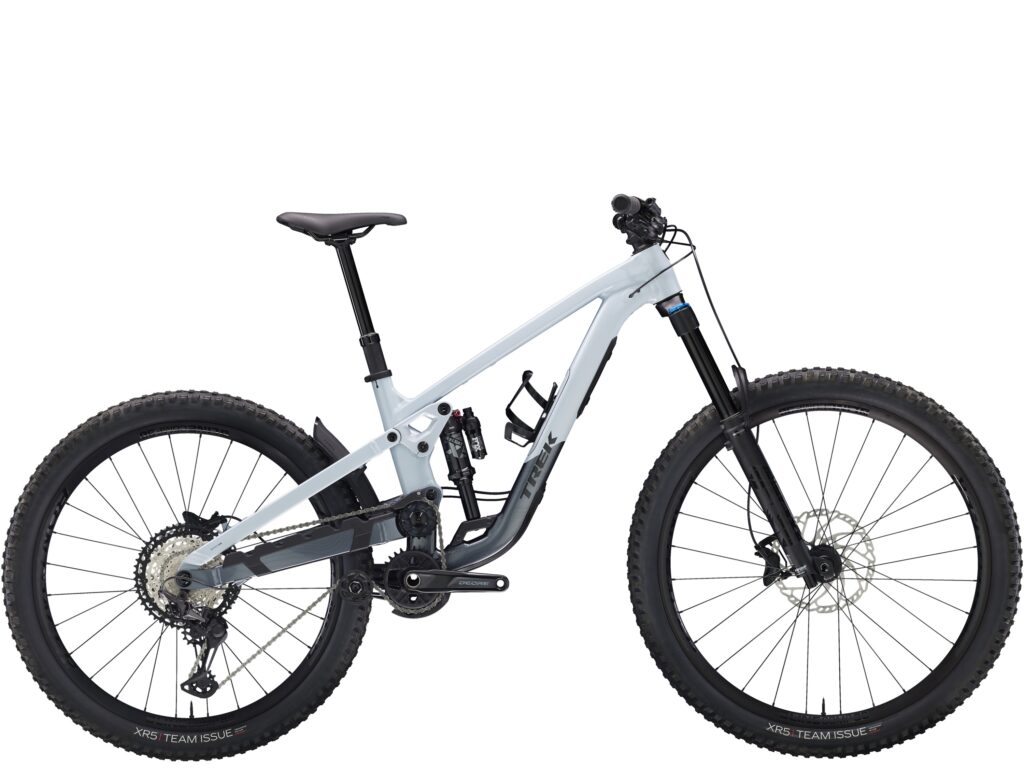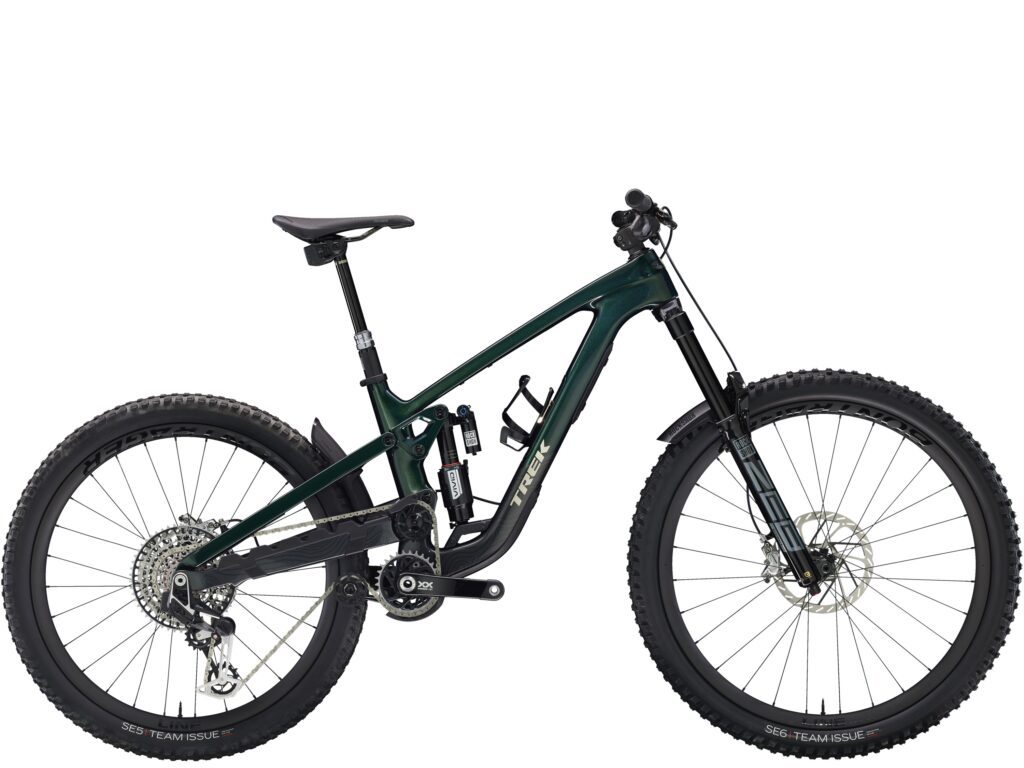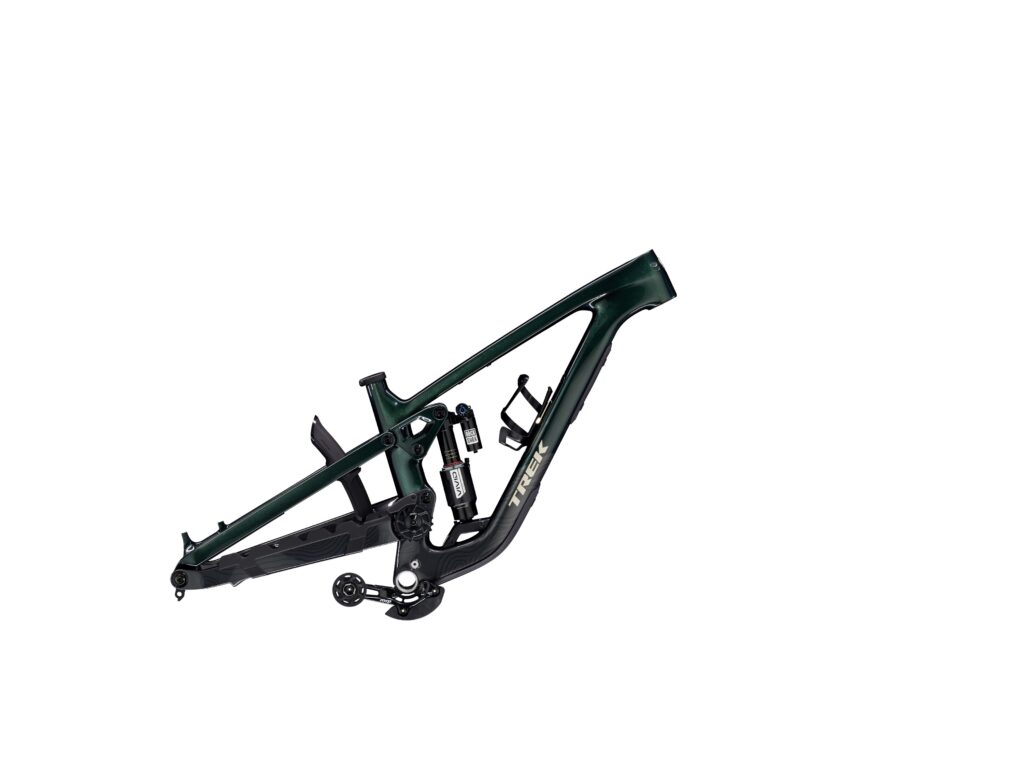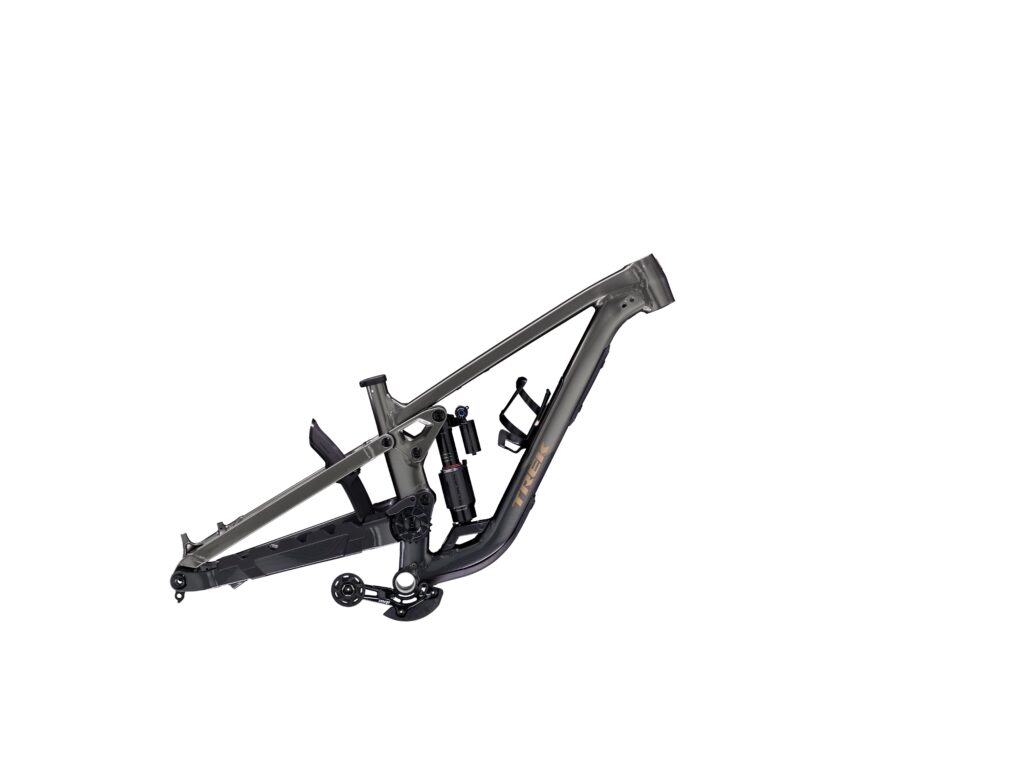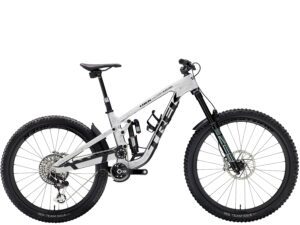Trek Slash Gen. 6 gets the high pivot treatment
Completely overhauling the Wisconsin brand's long-travel trail bike
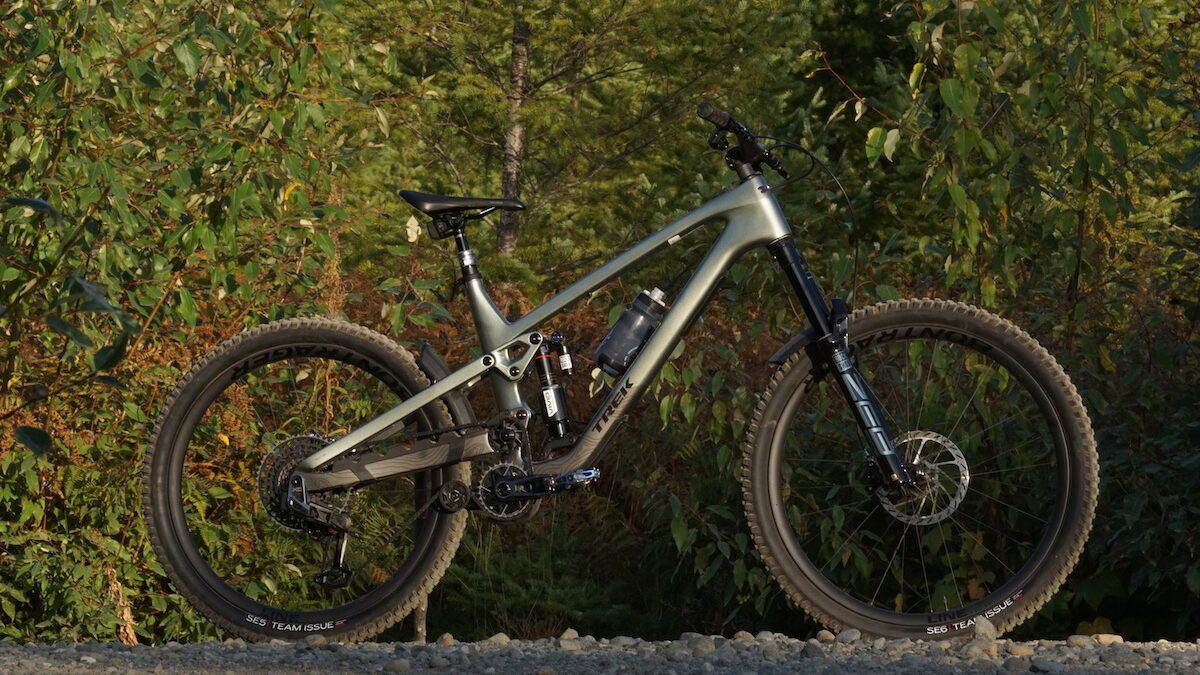
Today Trek officially released the sixth generation in the Slash line, after months of teasing the new bike on the enduro race circuit. More than an update, this is a radical design overhaul of the Slash. Most obviously, the long-travel/enduro bike is now built around a high pivot suspension design.
The new Slash isn’t just hopping on the high pivot hype train, though. Trek says the Gen.6’s high pivot is designed as a trail (and park) bike first and a race bike second. As such, it comes stock with mixed wheels, 27.5″ rear and 29″ front. Anyone who wants more speed than fun does have the option to switch to matching 29″ wheels.
We’ve been spending time on the sixth-gen Slash for the last month or so and have been impressed with what Trek’s managed to pull out of the high pivot design. Read on for the details on the latest Slash and our first impressions from the trails.
Introducing: Trek Slash Gen. 6
What’s new with the Gen.6 Slash? Well, almost everything. The changes start from the new high-pivot suspension design on the carbon fibre frame and ripple outwards. A few new Trek standard tricks, like headset cups to adjust head angle and a shock progression chip, join the party, too.
High pivot Slash?
While high pivot bikes are much more common these days than they were a few years ago. But they’re still a bit outside the norm. The basic idea is that the pivot location allows for a rearward axle path. This makes the suspension much smoother as the wheel moves with impacts instead of against them as it moves through the bike’s travel. To allow this to happen, an upper idler pulley is required. It mitigates chain growth as the wheel moves further from the bottom bracket. This comes with a not-so-fringe benefit of separating suspension movement from pedaling forces. Whether climbing or descending, this gives the bike better traction while you’re laying down watts.
Why high pivot? The suspension platform is generally associated with race bikes. Trek goes out of its way to say the new Slash is not primarily a race bike (though its debut at the Enduro World Cup shows it can, in its 29″ configuration, go plenty fast). Trek is primarily after the aspects of HP designs that lend the bike much more control than simpler designs. The rearward axle path gives a smoother ride and, ideally, endless-feeling traction. If that level of control lets you go faster, too? Well fast is fun even if you’re not being timed.
Big (pulley) wheel keep on turning
Trek uses an oversized 19t upper idler pulley to improve pedaling efficiency and minimize sound. The upper pulley is placed to give the Slash a higher anti-squat. The aim is making this big bike pedal with the efficiency of a much smaller rig. In an interesting detail, Trek worked with MRP to develop a new tooth profile for the lower pulley wheel so that it would work with SRAM’s new flat-top T-Type chain. It’s also worth noting that SRAM states a lower idler pulley is a requirement for its T-Type on high pivot bikes.
Mixed Wheels and moderate geometry
High pivot designs in race bikes are often associated with a very planted, almost grounded ride feel. High pivot bikes can smooth out the roughest trails but are not always associated with the lively, fun style that makes riding so exciting when you’re not trying to beat PRs. To counteract this, Trek moves the Slash to a mixed wheel configuration, with the option to go to matching 29″ for racing. The 27.5″ wheel is intended to keep the Slash’s handling sharp and precise while the 29″ keeps the bike moving on the trail.
Trek also avoids the “longer, lower, slacker” trend with the Slash. While it is much slacker, moving from Gen 5’s 64.1-degrees to 63.5 at the headtube for Gen. 6, the bike is not longer or lower at all. The BB height actually lifts by 0.7cm to match the “high” setting on the Gen 5 bike.
Along with the high pivot and associated idlers and pulley wheels, Trek adds 10mm more travel to the Gen. 6 Slash to bring it to a matching 170mm front and rear. Trek approves the frame for up to 190mm single crown forks, if you want to push the Slash into fully into park bike territory.
All the frame details
Trek adds a host of adjustments and new features to the Slash frame, too. There is a progression flip chip to adjust the shock’s leverage rate. Instead of a Mino-Link, the bolt-on shock mount can be switched out for riders who want to jump over to 29″ wheels. There’s also adjustable geometry via modular headset cups (sold separately) lending the Slash a degree of leeway in the head tube angle.
The Slash also moves to size-specific chainstays. The chainstay piece is the same for all sizes, with the difference being made in the BB position, so replacement stays work for any frame. The chainstays are lined with Trek’s take on noise-cancelling rubber guards. The distinctive design is intended to minimize movement vertically and laterally for a quieter bike. The chain does sit very close to the chainstays, but Trek says they found this generally makes the bike quieter since the chain has less room to really build momentum.
The downtube has replaceable, or removable, guards. Thanks to an integrated layer of carbon fiber protection in the frame, the guards are much shorter than the full-length pieces found on the Gen.6 Fuel EX.
First Impressions: Trek Slash Gen. 6
My first ride on the Gen. 6 Slash was surprising in the best way. I’m quite used to high pivots that stick to the ground but aren’t particularly fun or lively unless you’re going breakneck speeds. But the Slash HP is something different. Perhaps due to the combination of the mullet wheels and more conservative overall length, the sixth-gen Slash is just as exciting to ride as the fifth, though it perhaps views the trail through a slightly different lens.
It is interesting that Trek moves away from explicitly marketing the Slash as primarily an enduro race bike at the same moment as they move to the high-pivot design. But it works. The Slash is exciting to ride in a variety of terrain. From the first ride in the steep, junky tech of Whistler’s Westside to a wide range of trails closer to home on Vancouver Island, the Slash makes the most challenging trails fun. That’s in part because the high pivot gives the Slash an aura of confidence: you know that the minute the wheels touch back down they will stay there and there will be immediate traction. No skittering across landings, just let the brakes go and point where you want to go.
The cons of complexity
There are drawbacks to the more complex design, of course. The 9.9 XX AXS we’ve spent time on is about 1.6kg (3.5 lbs) heavier than the equivalent Gen.5 build. That means that, while the Gen. 6 Slash is easier to get off the ground than some more planted high pivot race bikes, it is still heavier than the old Slash on absolute terms. That weight is also felt uphill. The Slash is efficient and has endless traction for climbing technical features that make it adept uphill, but is not as spry as its predecessor.
The added pulleys and guides are also not as quiet. They are, again, more quiet than some competitors. And the Slash is impressively silent on the trail, except when it is not. Unless you keep all parts of the drivetrain immaculate, even the oversized upper pulley wheel will make some noise in the largest couple of cogs. And, in the hardest couple gears, there is some chain rattle (though not full-on chain slap) through more chundery sections of trail. It’s early days, still, and how much maintenance is required to keep the Slash silent remains to be seen. Finally, while RockShox’s new Vivid mostly does an excellent job of metering the Slash’s 170-mm of rear-wheel travel, each time you do find the end of that travel there is an audible reminder.

Any way you slice it
Usually, the added complication of high-pivot is justified by seconds taken off of the clock. Trek focuses on another rationale. Whether that’s worth it for the non-race crowd depends on how you feel. It’s definitely different than the outgoing Slash (Gen 5). Where that bike was quite light for the enduro category and liked to float over the trail, the new Slash is happy to plow right through.
But the sixth Slash is very intriguing, to be sure. The high pivot adds a calmness, especially at speed. So far, I’ve found it is encouraging me to pull up more knowing that there’d be traction the moment I touched back down, or to just take sketchy lines I wasn’t quite sure of. Mixed wheels are, in my opinion, a great way to keep big bikes lively on the trail and the Slash is adept at cutting around tight steep corners without losing momentum. While Trek says racing is plan B for the Slash, it’d certainly be adept at that, if you so chose. The faster you go, the calmer the Slash seems to get as it settles into its travel. That’s made the
Pricing and sizing: Gen. 6 Slash
Trek offers the Gen. 6 Slash in fives sizes. The small frame uses matching 27.5″ wheels and a sloping top tube for better standover. The remaining four sizes (M, M/L, L, and XL) all run mixed 27.5″ rear and 29″ front wheels.
The pricing on Trek’s newest long-travel trail bike is, for the top-end 9.9 range, admittedly staggering. It is, somehow, less expensive than the top-of-the-line Gen 5 Slash was priced at before sales ($16,400 with Flight Attendant, $14,700 with XX1 AXS). The majority of the Slash line is built around a carbon fibre frame, though two alloy frame builds will be available. There are also frameset options in both materials.
The Slash 8 starts the Gen. 6 line off at $5,600 with an alloy frame dressed in Shimano XT drivetrain, Deore 4-piston brakes and Fox’s Rhythm 36 fork and Float X Performance series shock.
At the opposite end of the spectrum, the Slash 9.9 XX AXS T-Type rolls in at $14,900 with SRAM XX Transmission wireless drivetrain, Zeb Ultimate Flight Attendant fork and new Vivid Ultimate shock from RockShox, Bontrager Line Pro 30 carbon hoops, RockShox Reverb AXS wireless 34.9mm dropper post (150mm/170mm depending on size) and SRAM Code Ultimate Stealth brakes.
The sixth-generation Slash is available now from Trek and Trek realtors.
- Slash 9.9 XX AXS T-Type – $14,900
- Slash 9.9 XTR – $12,500
- Slash 9.9 XO AXS T-Type – $12,000
- Slash 9.8 GX AXS T-Type – $10,000
- Slash 9.8 XT – $9,600
- Slash 9 GX AXS T-Type – $7,500
- Slash 8 – $5,650
- Slash Gen.6 carbon fiber frameset – $5,000
- Slash Gen 6 alloy frameset – $3,500
